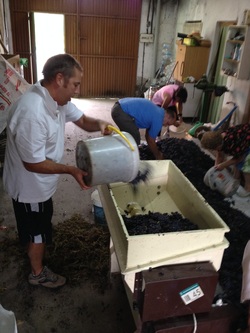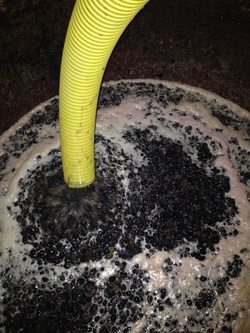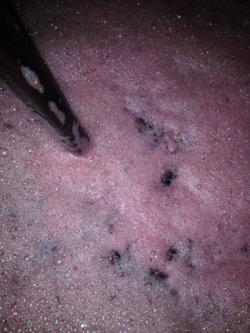
Once all the grapes were gathered and left to rest for a couple of days, we put them through the de-stemmer. The de-stemmer (see picture) separates the fruit from the stems.
We feed full bunches of grapes into the machine at the top, the stems and expelled at the bottom and you can see them on the floor on the left hand side of the picture. The fruit and juice (aka the good stuff) goes through a tube and into the container where we want to kick start fermentation.

The wild yeast feed on the glucose (sugar) in the must (grape juice) and transform it into alcohol and carbon dioxide. This process is called alcoholic fermentation, the process by which the sugar levels in the must drop increasing the alcohol content in the wine.
We measured the juice sugar content on the must at the start, 24-25gr of sugar per 100gr of must.
For the first couple of days sugar levels remained constant. On the third day however as the yeast thrived, sugar started dropping rapidly at a rate of 3-5gr per day.

Our dry red wine contained a mixture of garnacha (70%) and tempranillo (30%) grapes. The must took to fermentation within three days.
Our sweet wine was a mixture of garnacha (70%) and alarije (30%) grapes and it took an extra day (four in total) to start fermenting in earnest. After two days of relatively fast alcoholic fermentation (six in total) we added an additional third part of grappa. The grappa raises the alcohol levels so that yeasts die and sugar levels stay relatively high (~18%). The resulting wine is sweeter as not all the sugar was consumed and stronger due to the addition of grappa to the mix.

 RSS Feed
RSS Feed
